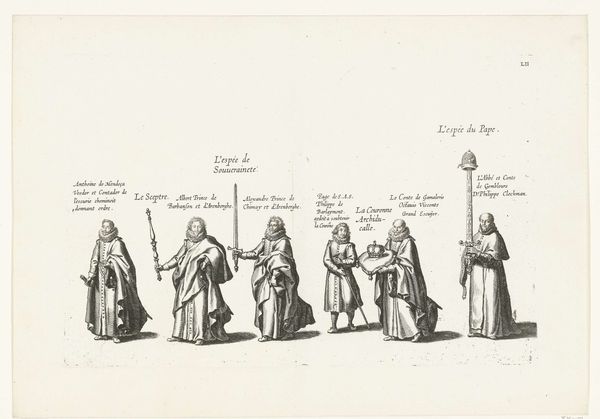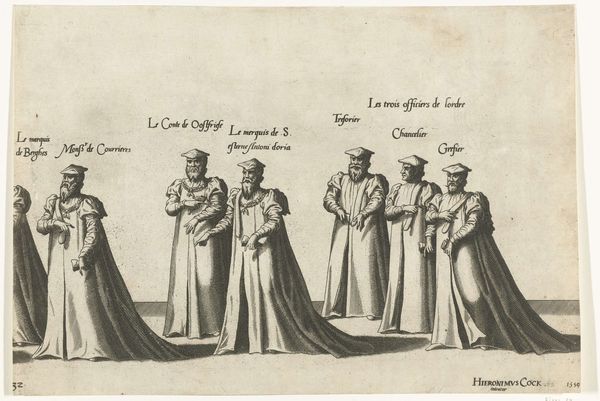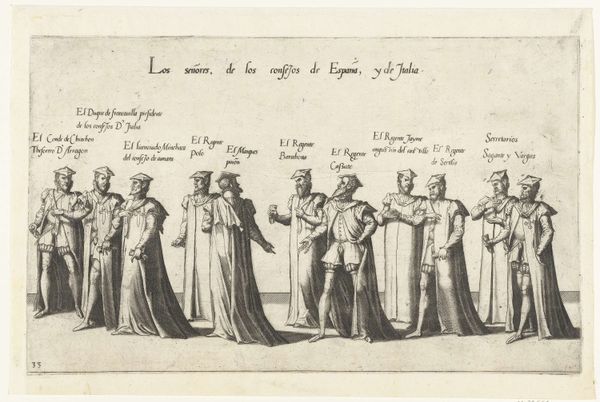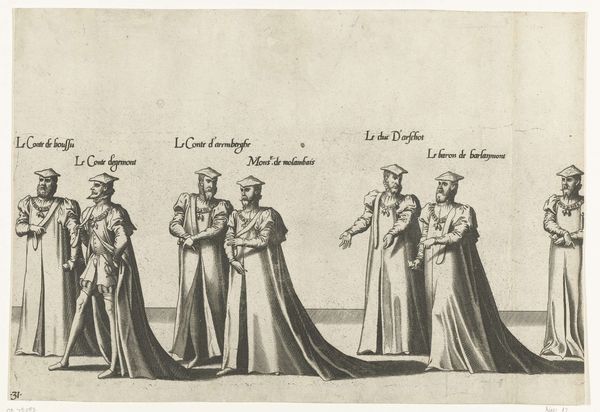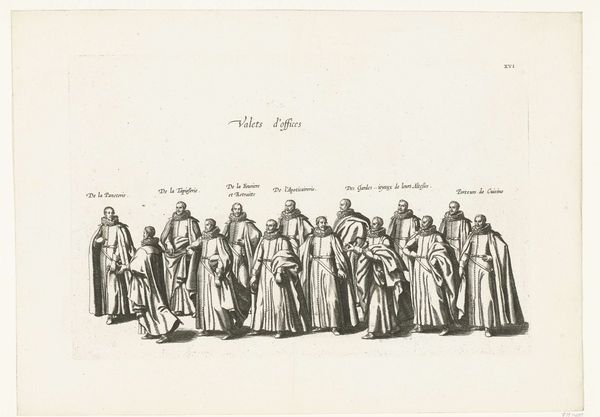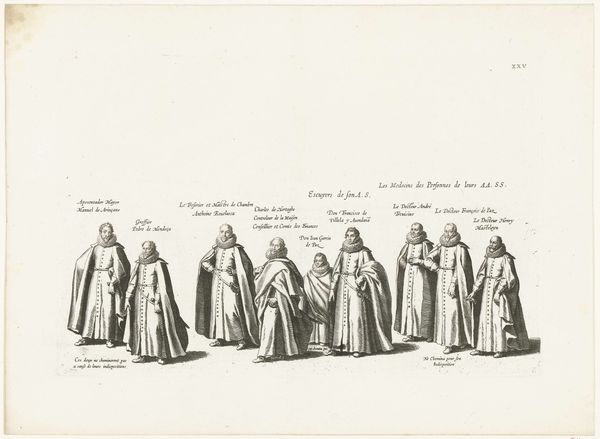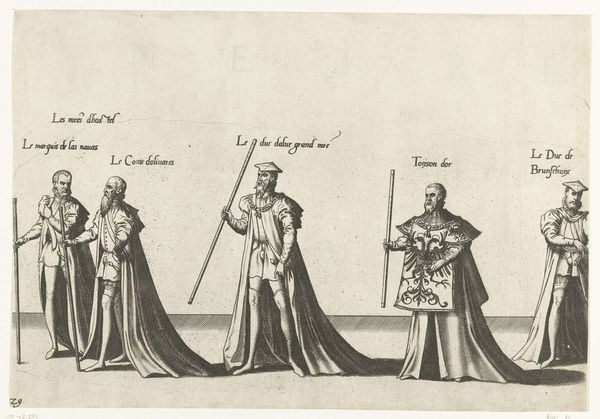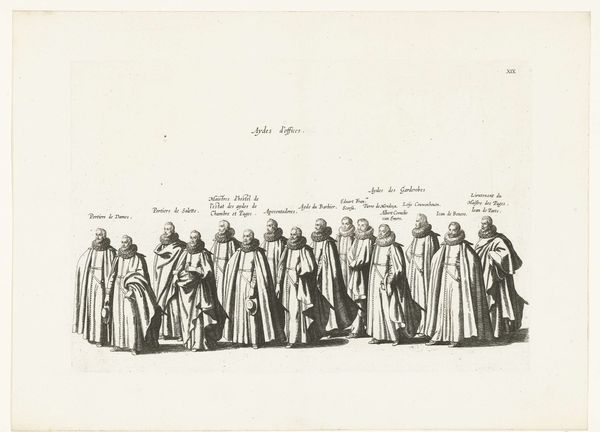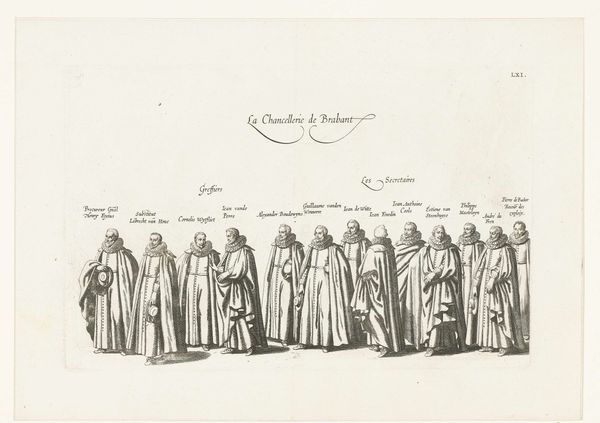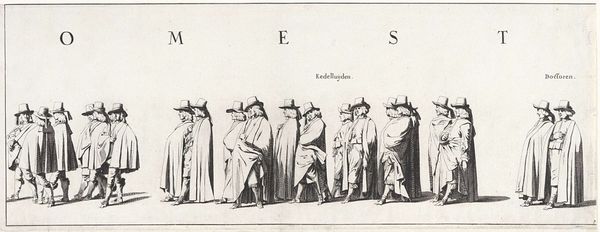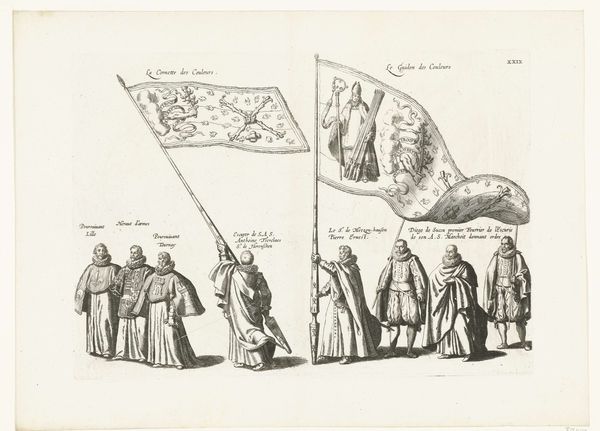
print, engraving
#
portrait
#
baroque
# print
#
line
#
history-painting
#
engraving
Dimensions: height 209 mm, width 549 mm
Copyright: Rijks Museum: Open Domain
This print, titled "De begrafenisstoet van Frederik Hendrik," was made in 1647 by Pieter Nolpe using the process of engraving. The evenness of the lines and the precision in capturing details like the drapery of the figures' robes speak to Nolpe's mastery of the burin, the tool used in engraving. This intaglio process involves meticulously incising an image into a metal plate, which is then inked and pressed onto paper to create the print. The very nature of engraving lends itself to a kind of visual storytelling, and the social context becomes integral to its making. Prints like this one had a vital function during this period. As a means of mass communication, they played a role in shaping public perception and memorializing important events. Nolpe's print captures not just a funeral procession, but also the hierarchies and social structures of the Dutch Republic. Considering the labor involved, from the engraver to the printer, we can see how printmaking served a critical role in disseminating information and reinforcing social narratives.
Comments
No comments
Be the first to comment and join the conversation on the ultimate creative platform.
